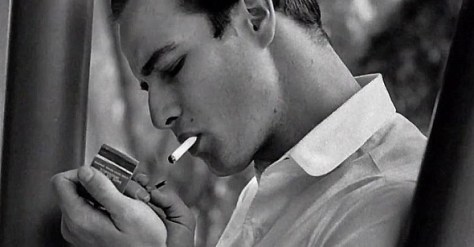By Dennis Hartley
(Originally posted on Digby’s Hullabaloo on December 19, 2015)

In my 2013 review of the documentary The Trials of Muhammad Ali, I wrote:
[…] Ali’s vilification was America’s pre-9/11 flirt with Islamophobia. Ali was “safe” and acceptable as a sports celebrity (as long as he played the face-pulling, poetry-spouting ham with Howard Cosell), but was recast as a dangerous black radical once he declared himself a Muslim and began to publicly speak his mind on hot-button issues. The Islam quotient is best summarized by an interviewee who says “…Since 9/11, ‘Islam’ has acquired so many layers and dimensions and textures. When the Nation of Islam was considered as a ‘threatening’ religion, traditional Islam was seen as a gentle alternative. And now, quite the contrary […]
What Ali went through back in the 1960s was a romp in the fields compared to what every day law-abiding Americans who happen to be Muslim have to put up with in our current political climate; particularly in the wake of the San Bernardino mass shooting incident.
Between the vile hate rhetoric spewing from certain presidential hopefuls and wingnut commentators, and the only slightly more subtle notes of hysteria ginned up by mainstream media outlets who should know better, I would imagine many of these folks are involuntarily compelled to look over their shoulder as they go about their daily lives.
Am I being shrill? Alex Wagner interviewed Dr. Suzanne Barakat on MSNBC’s All In this past Thursday. She is the sister of Deah Barakat, one of the 3 Muslim students who were slain by a neighbor this past February in Chapel Hill (authorities have not ruled out a hate crime).
At one point in the interview, Wagner asks Dr. Barakat (who works at San Francisco General) what her personal experience has been, as a professional who happens to wear a head scarf. She recalls fellow hospital workers making comments like “…she mustn’t be a terrorist…because she has a badge.”
Apparently, this is not a sporadic occurrence; she adds “I was almost run over the other day in the parking lot by a patient leaving the hospital, who stuck out his middle finger and called me [an] ‘effing B’ [sic].” She’s a doctor. An American citizen. All her attacker saw was a woman wearing a hijab.
All the more reason for me to bring a rather timely new documentary to your attention. While ostensibly a PBS Frontline-styled, multi-viewpoint treatise “about” the venerable Muslim tradition requiring a woman to wear a head scarf in public, The Tainted Veil is also a kind of litmus test that subtly prompts a non-Muslim viewer to step back and take stock of his or her own autonomic response when encountering a person who is so attired.
When a modern-day Muslim woman dons a hijab, what does it telegraph to the world? Does it denote a personal spiritual conviction? Is it a cultural/ideological symbol; a kind of uniform? A fashion statement? A feminist statement? A symbol of male oppression?
With their eclectic array of interviewees, which includes scholars (Islamic, Christian and Jewish), clergy, educators, liberals, conservatives and a cross-section of Muslim women around the world who have worn the hijab, co-directors Ovidio Salazar, Nahla Al Fahad and Mazen al Khayrat demonstrate that the answer to all those questions could be “yes.”
Some viewers may be flummoxed that the film doesn’t adhere to any specific point of view; but that is precisely what I liked about it. It doesn’t take sides, and by not doing so it stimulates the kind of open-minded dialogue that we need to have in a day and age of such acute political and cultural polarization.
As one of the interviewees observes (paraphrasing Edward Said), “We are not living in a clash of civilization, but a clash of ignorance…people don’t approach each other, even though we live in a ‘connected’ world.” We’d best find a path to connecting with one another soon, because as one of the religious scholars cautions, “When Earth lives in misery, the heavens bloom.” Er, amen?











